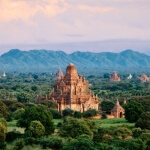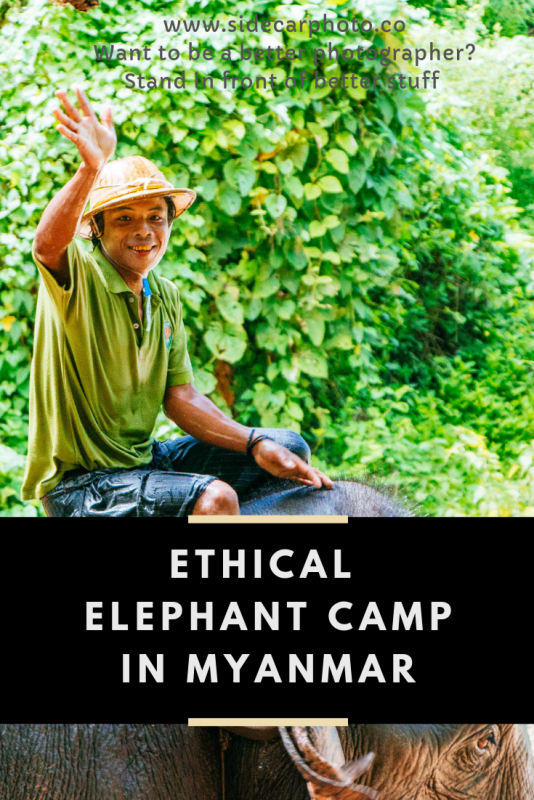Green Hill Valley Elephant Camp, Myanmar is a sanctuary for retired elephants. You can have a personal, rewarding experience with these gentle animals without riding them.
I LOVE elephants and this was an amazing way to get up close photos of these beautiful, wise-looking creatures.
This is a fairly expensive excursion (~$100 USD) and you need a low to moderate fitness level to enjoy it.
It’s not too hard – I’m pretty weak sauce and did just fine, but it certainly could be tough for some. Watch out for one exciting part!
Ethical Elephant Camp
It’s really important to do what you can to ensure any wildlife you come into contact with while traveling is not being harmed for your tourist dollars.
A lot of elephants are used in the logging industry in Myanmar and these elephants were brought here because they were no longer able to work in logging.
While it is sad to consider that these elephants were captive with the logging industry, Myanmar has had a long history of timber elephants. Using elephants meant the forests did not have to be destroyed to build roads and instead could be navigated using these animals.
At night, the elephants forage in forests and mate and feed just as they would in the wild. In fact, these elephants have a life expectancy closer to that of wild African elephants, than zoo elephants.
The project in Green Hill Valley Elephant Camp is run by a vet named Mr. Ba. Before working here, he was a vet with MTE (Myanmar Timber Enterprises) which is a group that cares for elephants in the timber industry.
You can read more about the sanctuary and its mission here.
Nitty Gritty
| Getting in | Reservations needed beforehand as they have to limit the number of interactions to keep the elephants happy. Admission is ~$100 USD, but you know it's a good cause. |
| Best time of day | You have to work with the elephants' schedules. If you want the full experience, arrive before 10am to get to both feed and bathe the elephants. |
| What to wear | Wear swimwear underneath and quick drying clothes, you will probably get wet. If you are going to trek, wear a light long-sleeved shirt, hiking shoes and mosquito repellent. They will provide sandals, shorts, and a hat. |
| Best gear | Standard recommendation of a walkaround applies here. For micro four thirds, check out this article on the best micro four thirds lenses for travel. For Fuji cameras, check out this article on the best fuji lenses for travel. For Canon, the Canon EF-S 18-135mm f/3.5-5.6: For Nikon, this Nikon 18-200mm makes a great walkaround: A waterproof camera could be fun in the river. The GoPro Hero7 Action Camera is a good choice: |
| Best accessories | To get great color in the forest shots and cut down on water reflecitons, a polarizer could come in handy |
Green Hill Valley Elephant Camp
The elephant sanctuary has a number of visitor options, one with an actual trek. We did the one without a trek, so I’ll be describing that one.
When you arrive at the elephant camp, you put away your shoes and any other possessions you don’t want to bring with you into little locked cubbies. They will provide sandals to wear.
Then we headed over to cross a river to get to the elephants. But the monsoons were intense the night before and the bridge had washed away. Instead, we had to walk across a raging river holding onto a rope!
Okay, it was more of a raging stream but it was about 20-30ft across and felt quite powerful. It was an exhilarating start! We were well helped by the guys that work at the sanctuary so it didn’t feel too unsafe.
It’s beautiful walking into the jungle, especially compared to the hectic life in Yangon.
Feeding the Elephants
When you get to the clearing, you can start feeding the elephants in the little huts. They have pumpkins and veggies to feed the elephants, although the elephants really prefer the pumpkins.
It was a challenge to shoot the dark elephants against the bright sunlight. An overcast day would have made for an easier setting. In these situations, I use manual settings to expose as well as I can for the shaded subject and the background, prioritizing the subject.
Then I can shoot away without futzing with the exposure before every single shot.
As you can see here, the background is practically blown out because we were in shade. But the elephant is well exposed so it’s still a decent shot.
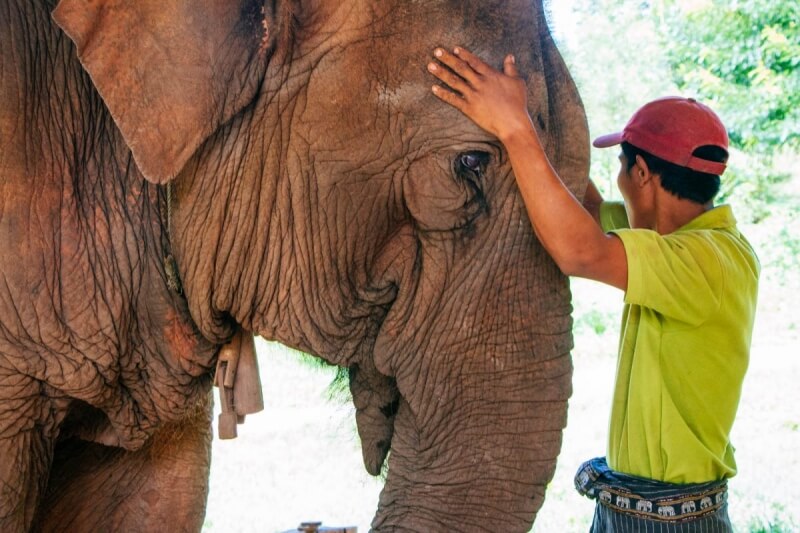
Mahout Interactions
Seeing the mahouts working with the elephants is an experience to itself. They are so comfortable with them, it’s worth it to watch for a good moment between elephant and mahout.
As always, I’d rather have a local in the shot than a tourist.
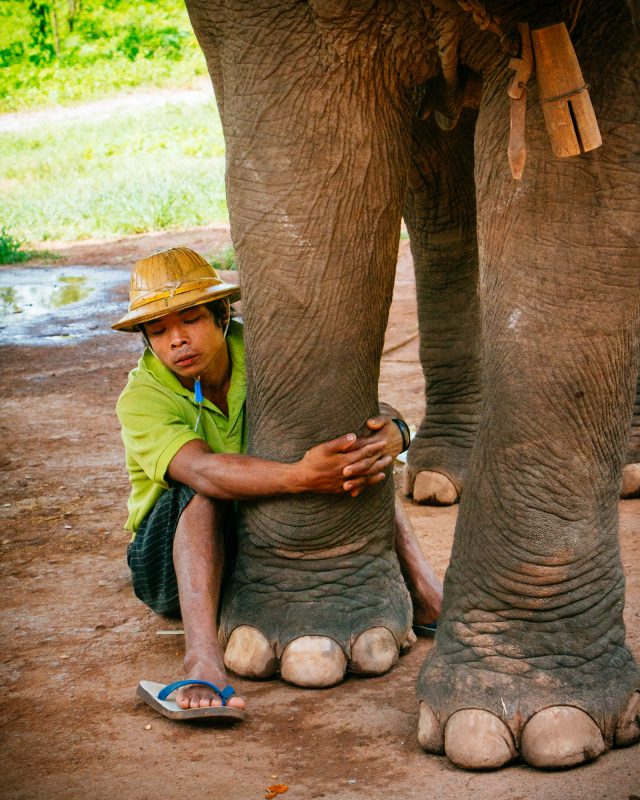
Look around and watch for other scenes of interest. I took this shot of a young man prepping the pumpkins to feed the elephants.
It was only after the fact that I noticed his nails are painted black! Is he a member of Myanmar’s famous punk scene?
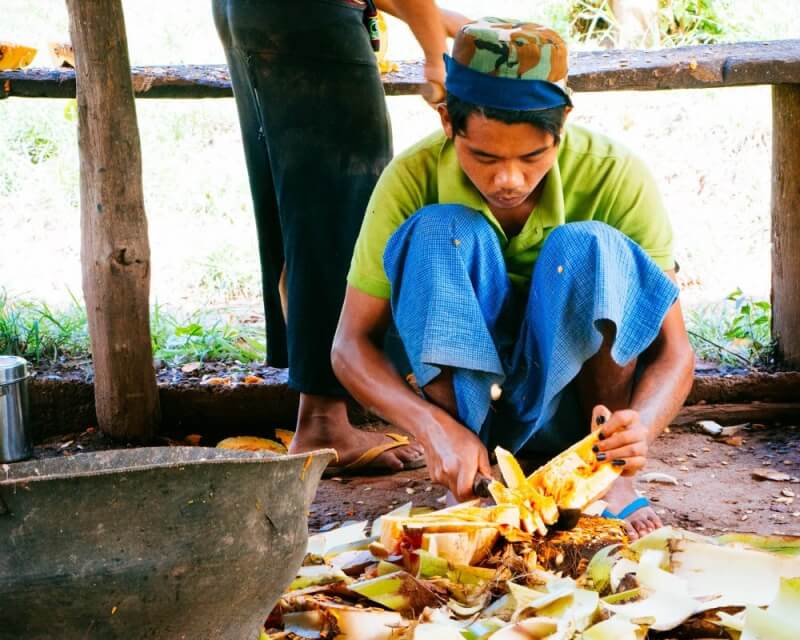
Definitely take some time to shoot the elephants up close. It’s rare to get such an opportunity with these animals.
Later in the water, it will be hard to get close enough for details without getting your gear wet.
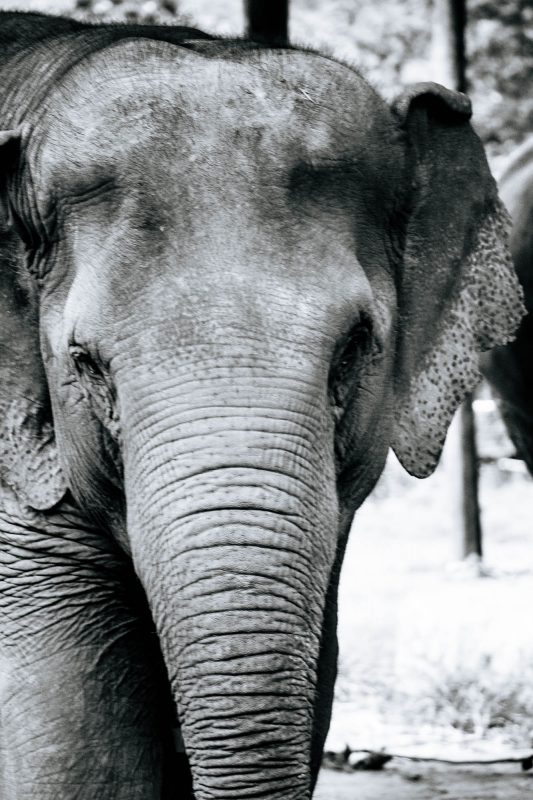
Bath Time
After you feed the elephants, it’s time to go down to the river to bathe them.
They provide you with special pants to go into the water. But here’s a tip you’ll thank me for, show up with swimwear under your clothes! You can get soaked to your waist.
I did not have swimwear and well had to be careful with how far into the river I got.
On that note – obviously you don’t want to walk into the river with your unprotected camera.
My suggestion on gear is to bring your camera but only use it from the riverbank. The elephants will only be about 10-20 feet away.
I brought a waterproof GoPro Hero to shoot in the water as well.
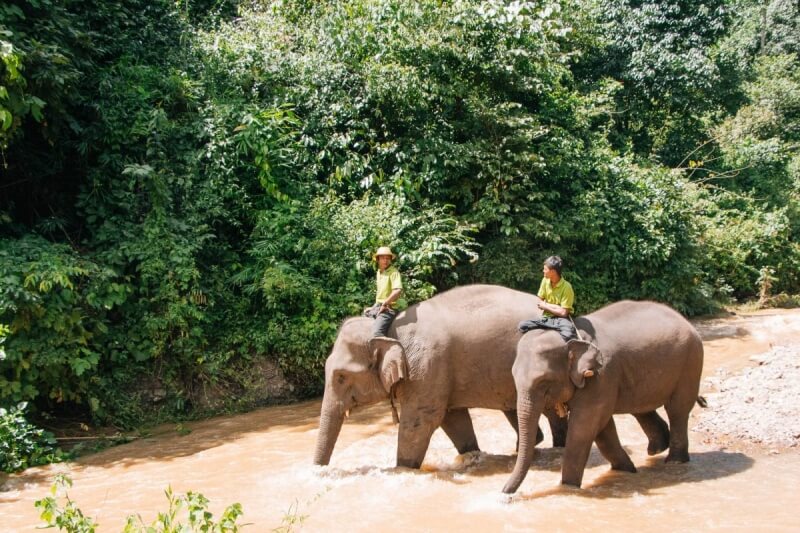
Again, it will be challenging to expose for both the elephant and the sunny reflections off the water.
Carefully select an exposure using manual settings and bring back your shadows and highlights in post-process.
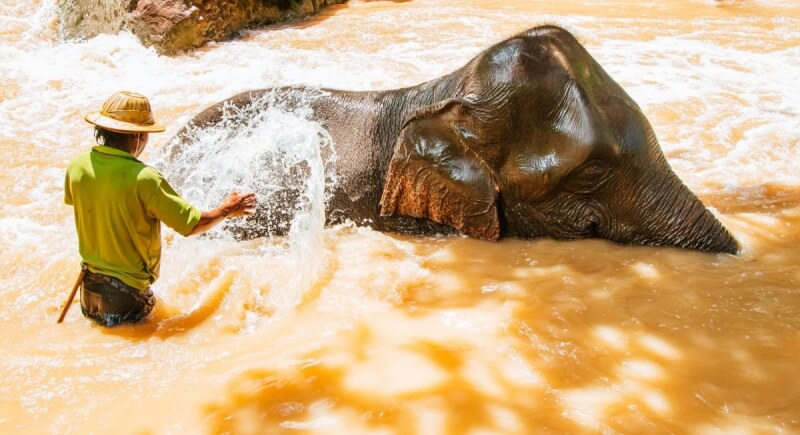
Another good idea is to use a polarizer. It will reduce the reflections from the plants and give you better greens in your shot.
The Hoya circular polarizer in this kit does an excellent job. Just be sure to get the size that matches your lens’ diameter.
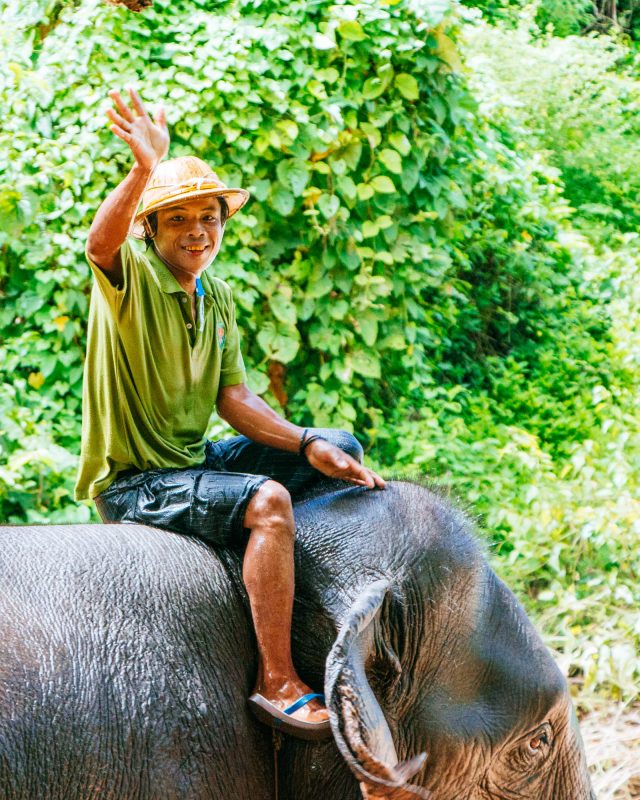
Giving Back
The day ends with planting a tree to help with reforestation and a delicious lunch.
If you love plants they have a beautiful forested area to shoot as well. I preferred to relax and eat my lunch but I shot this lush image of the greenery.
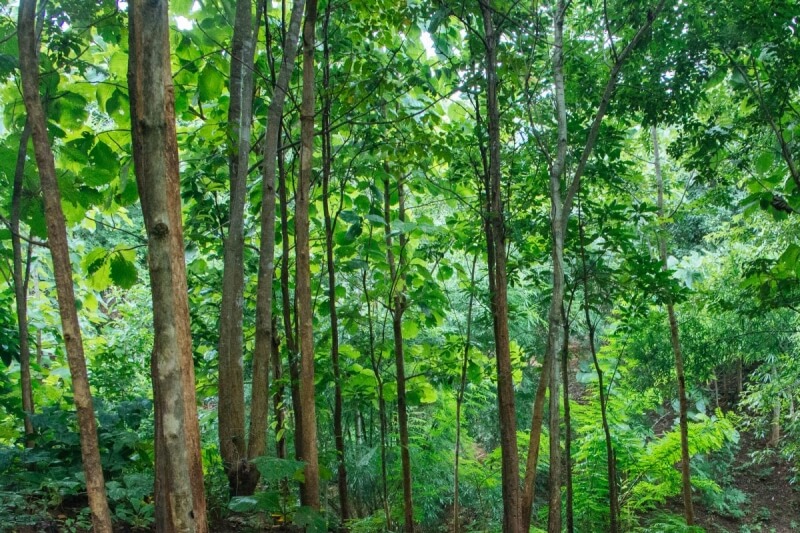
Green Hill Valley Elephant Camp, Myanmar – Final Thoughts
The whole experience was really unforgettable, and at least as of today, the most incredible experience I’ve had. Another amazing experience in Myanmar was Inle Lake.
I mean like, heart beating faster type stuff – and I’m so glad I have these beautiful photos to capture the moment.
I would love to go back there and hope that the tree I planted has thrived!
For more amazing places to visit in Myanmar, check out this list of the best photo spots.
Best Photo Spots in Myanmar
Check out these amazing places in Myanmar that are excellent for photography.





